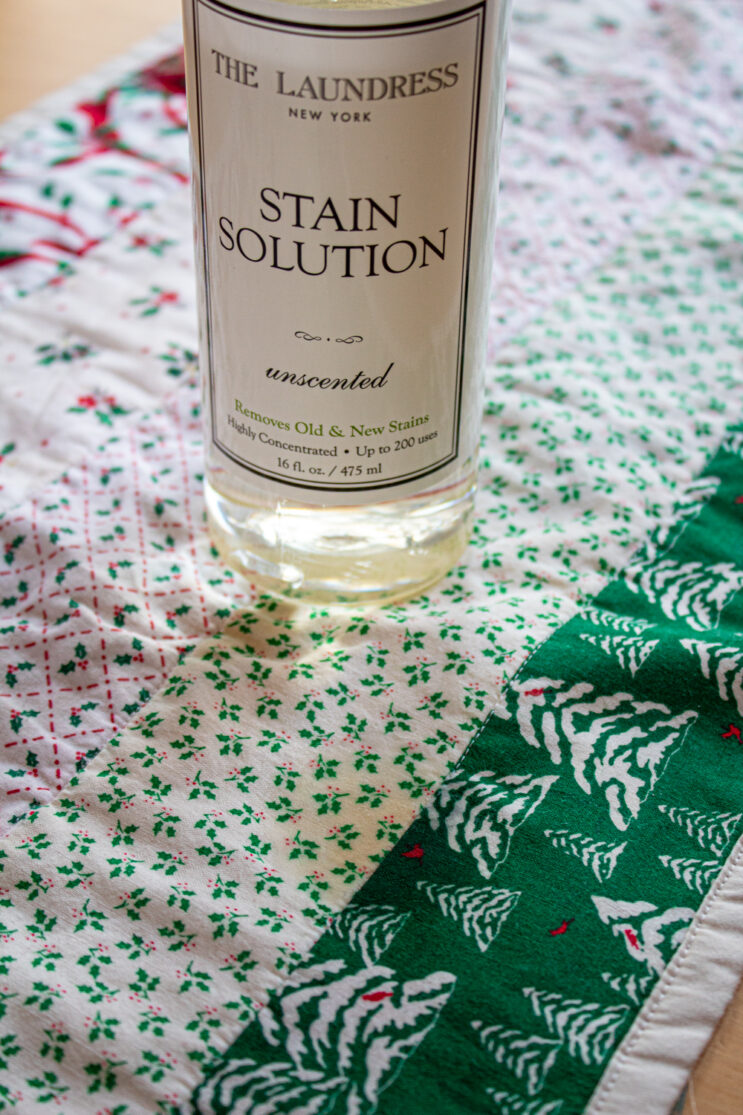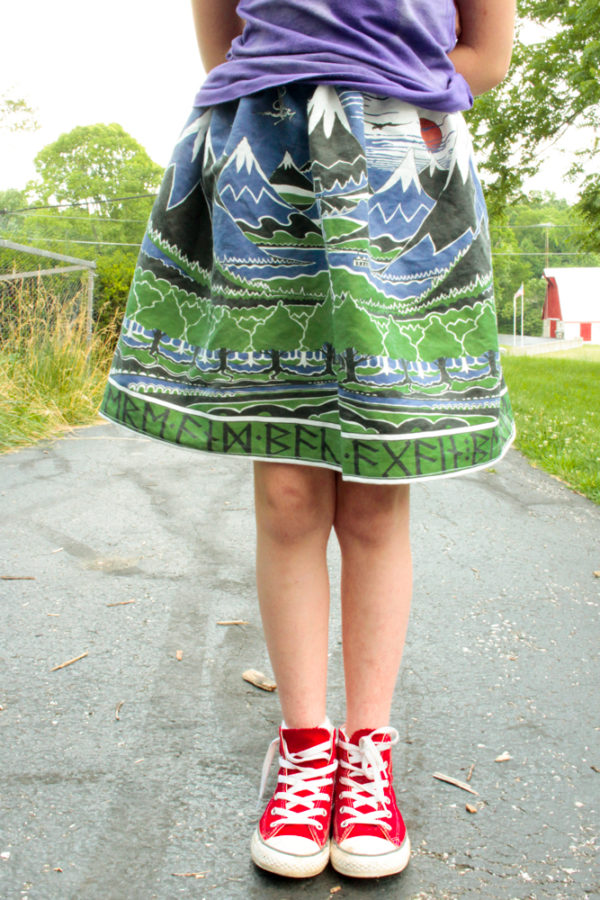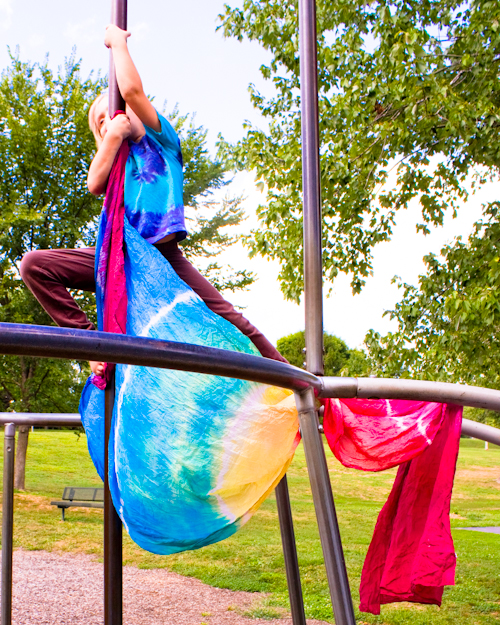
I originally published this tutorial on Crafting a Green World.
Our couch is horrible.
It's got good bones, I guess. I mean, isn't that what you're supposed to say about a couch that you bought used 15 years ago and brought into a house with toddlers, knowing that before you bought it the couch lived in the lounge of a freshman dorm for who knows how long previously, and the darn thing is still standing?
It's still standing, but it looks horrible. Like, really, really horrible, in a way that even I, the queen of Lived-In Chic, am embarrassed about whenever people visit and I have to expose them to the horror of its appearance.
But here's the thing: a couch that looks horrible? That is SO fixable. Just throw a slipcover over that little monster and go on with your life! And if you don't have a slipcover? It is SO easy to sew one from scratch!
The key to this DIY slipcover project is lots and lots of upcycled denim. Fortunately, old denim is easy to come by--as soon as I announced this project, I had family and friends and people I didn't even know practically throwing their old blue jeans and denim shorts and jean skirts at my head.
I finally had to start saying a flat-out no to anyone who tried to hand me a bag of clothes (even then, sometimes I'd wake up to find a bag on my porch), and I've still got enough to slipcover all three sections of my horrible couch and probably make my entire family warm, heavy denim quilts this winter, as well--stay tuned!
Tools & Supplies
Here's what else you'll need to make this upcycled denim slipcover for your couch:
- Large-format pattern paper. Newspapers work well for this. If your paper isn't large enough, tape additional pieces to it until it is.
- Cutting and measuring tools. I work with a fabric tape measure, ruler, self-healing cutting mat, rotary cutter, and fabric scissors.
- Sewing machine with a denim needle and heavy-duty thread. For extra security, you can use the thread that's designed specifically for denim.
Directions
Grab your tools, and let's get sewing up that ugly couch!
1. Measure And Piece Together The Big Rectangle
Your couch definitely has a big rectangle. Maybe it's the back, or maybe, like mine, you'll get a whole straight section running from the bottom in front, up to the seat and across, up to the back and over, and down the back to the floor. Thanks to that big rectangle, the only slipcover pieces that I need to sew are the big rectangle and two matching side pieces.
To measure this big rectangle, here's where your fabric tape measure comes in handy. My couch is 45" across, and using my fabric tape measure I could measure everything from the bottom front to the bottom back as one continuous length of 92".
Add a couple of inches to each measurement for a seam allowance, and go piece together a GIANT denim rectangle!
To actually piece together that big rectangle, simply start squaring off pieces of denim and sewing them together. The goal is to create a piece that's larger than the required dimension so that you can square again, if necessary, and trim it down to size. Pretend that you're making a crazy quilt; the nice thing about using denim is that everything is basically the same colorway, so it'll all go reasonably well together.

And yes, feel free to include pockets and embellishments! Keep metal pieces off of this big rectangle, because you don't know yet what part will be the seat and what part the backrest, but in a minute when we do the sides of the slipcover, then even grommets and zippers are fine.
When you've got your big rectangle finished, drape it over the couch and, if necessary, trim it further.
2. Make A Pattern For The Slipcover's Side Pieces

Tape together newspaper or large-format paper until you have a piece that's larger than the side of your couch.
Line up the bottom of the paper with the floor, and hold the paper against the side of the couch.
Trace the edges of the couch onto the paper. When you've got the outline, lay it flat on the floor and use a straightedge and a french curve to help you neaten the lines. You can also add an inch of seam allowance.

Cut out the pattern piece and hold it up to the couch again to double-check it. Redraw or trim as necessary.
3. Trace And Piece Together The Slipcover's Side Pieces
Again, your goal is to piece together denim that is larger than the pattern piece, then trim it to size. I don't know who gave me their old denim skirt, but I was STOKED to see that when I cut it in half and cut out the zipper and waistband, it was still enough fabric to make one entire side panel of my slipcover! Yay!

Conversely, I did a LOT of piecing for the second side panel. Don't forget that those large pieces of denim are nice to work with, but using up small pieces and scraps is just as important when you're trying to save as much material as possible from the waste stream. In the photo below, I pieced my trimmings from the big rectangle to the panel, then traced the pattern piece directly onto it and cut away the extra. As a note, I seriously overestimated the dimensions because I was paranoid, and it's easier to trim away than to add more fabric!

I did the same trick of piecing together a section made of small scraps, sewing it to the panel, and tracing the pattern to trim the excess to make this backrest section. Since the section that I was adding was pretty small, I dove deep and used up some pretty small scraps to piece it:

4. Sew The Slipcover Panels Together
When you have the big rectangle and both side panels complete, you can sew them together. Double-check your work first by placing everything on the couch and checking its fit; when I did this, I discovered that I should cut a couple more inches off the width of my big rectangle. I don't know if I accidentally added my seam allowance twice, or was just, again, overly generous with my measuring. Regardless, the slipcover looks much nicer when it's clearly well-fitted!

I'll be frank: this is NOT the cutest thing that I've ever sewn. Patchwork denim furniture is not one of the goalposts of my interior design aesthetic. But you know what? I don't have it in my budget to buy a brand-new couch this year, nor do I have the desire to trash a perfectly decent piece of furniture that is still super comfy and only looks like garbage. This upcycled denim is just as sturdy as upholstery fabric (with NO flame retardants!), and, as I've already discovered, when a kid leaves an uncapped Sharpie lying on it, it's just as easy to patch as a pair of blue jeans.
Besides, the worn denim has made that couch even more impossibly comfortable, and the whole thing doesn't look half bad when it's covered in throw pillows and kittens and happy kids.















.jpg)
.jpg)
.jpg)
.jpg)
.jpg)
.jpg)
.jpg)
.jpg)
.jpg)
.jpg)
.jpg)
.jpg)
.jpg)
.jpg)
.jpg)
.jpg)
.jpg)
.jpg)
.jpg)
.jpg)
.jpg)
.jpg)
.jpg)
















